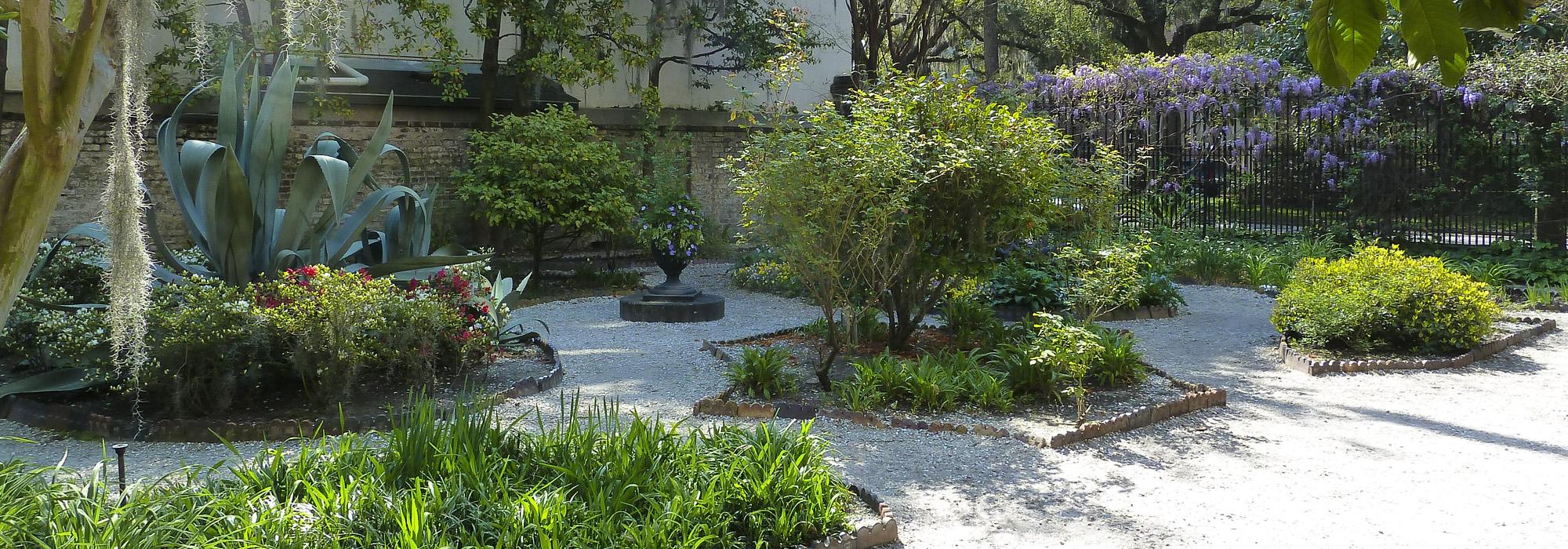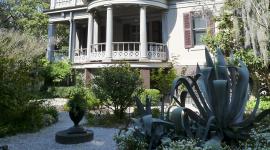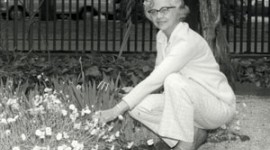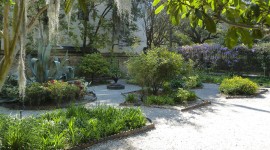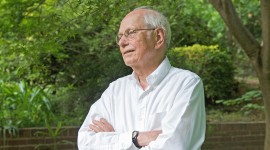Important Garden at Girl Scouts of the USA “Birthplace” Site in Savannah Added to Landslide® List of Nationally Significant At-Risk Landscapes
Media Contact: Nord Wennerstrom | T: 202.483.0553 | M: 202.225.7076 | E: nord@tclf.org
Lee was one of the first landscape architects in Savannah and the first female registered landscape architect in the State of Georgia
Washington, DC (January 5, 2016) – The Cultural Landscape Foundation (TCLF) today designated the Clermont Lee-designed garden at the Juliette Gordon Low Birthplace, the girlhood home of the Girl Scouts of USA’s founder in Savannah, Georgia, as a Landslide® nationally significant at-risk and threatened landscape. According to the Landslide designation, Lee (1914-2006), a Savannah native who spent most of her career in the city, was the first female registered landscape architect in Georgia and purportedly the first professional practitioner in Savannah. Lee was known as the foremost expert in recreating historic landscapes in Savannah and her design for the Juliette Gordon Low Birthplace, a Victorian parterre garden comprising intricate geometric shapes, is an important work in her career cannon, hence the designation as a Landslide site. Landslide provides national visibility to significant designed landscapes that are threatened and has been instrumental in preventing the demolition of the Russell Page-designed viewing garden at the Frick Collection in New York City, the M. Paul Friedberg-designed Peavey Plaza in Minneapolis, MN, and many others.
Soon after purchasing the girlhood home of its founder in 1953, the Girl Scouts of the USA commissioned Lee to design a garden for the home that would be compatible with its historic character, circa 1850. In a time when it was rare to do so, Lee researched planting plans and plant types in an effort to create an historically accurate garden, and she remained actively involved in the maintenance and care of the garden she designed for more than 40 years. The house became a National Historic Landmark in 1965—the first in Savannah—but the designation does not include Lee’s landscape.
In addition to the Low Birthplace, Lee developed designs and planting plans for other historic buildings in the city, including the Andrew Low House and Green-Meldrim House, along with five city squares that were integral to the colonial plan by James Oglethorpe, and she consulted on historic landscapes throughout Georgia.
“Clermont Lee was an important landscape architect whose designs in her native Savannah are a unique and irreplaceable contribution to the both the city’s narrative and historic fabric, which makes the potential loss of the Low Birthplace garden very disconcerting,” said Charles A. Birnbaum, TCLF’s president & CEO. “A sympathetic rehabilitation of the garden could maintain its historic character and address 21st-century needs, while also honoring the city’s most influential landscape architect of the second half of the 20th century.”
Lee, who was profiled in Shaping the American Landscape: New Profiles from the Pioneers of American Landscape Design Project, was educated at Barnard College in New York City and Smith College in Northampton, MA, and received a master of landscape architecture degree in 1939 from the Smith College Graduate School of Architecture and Landscape Architecture (formerly the Cambridge School) near Harvard University in Cambridge, MA. She served on the boards of Historic Savannah Foundation, the Savannah Public Library, Savannah Science Museum, the Georgia Conservancy, and the Savannah Academy of Lifelong Learning.
About The Cultural Landscape Foundation
The Cultural Landscape Foundation (TCLF), founded in 1998, is a non-profit foundation that provides people with the ability to see, understand and value landscape architecture, its practitioners, and our shared landscape legacy in the way many people have learned to do with buildings and their designers. Through its website, lectures, outreach and publishing, TCLF broadens the support and understanding for cultural landscapes nationwide to help safeguard our priceless heritage for future generations. TCLF makes a special effort to heighten the awareness of those who impact cultural landscapes, assist groups and organizations working to increase the appreciation and recognition of cultural landscapes, and develop educational tools for young people to better connect them to their cultural landscape environs.
# # #



